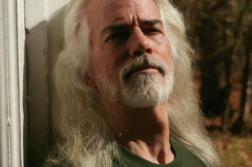Michael Bronski is one of the great unnatural resources of gay and lesbian letters. He’s insanely well-read in a wide range of areas: fiction, politics, history, and theory. And he loves not only the printed word but film, music, and theater as well. I’ve known him for many years and am accustomed to conversations that swing from the singing of Eddie Cantor to the writings of Herbert Marcuse to the subversive pleasures of Dude, Where’s My Car? His new book, Pulp Friction: Uncovering the Golden Age of Gay Male Pulps (St. Martin’s Press, paperback, $14.95), is an ingenious work of social history, a picture of postwar America built out of selections from paperback novels of the era, a revisionist history of love and sex from World War II to Stonewall and beyond. With smart commentary along the way and an invaluable bibliographical essay at the end, Bronski turns many of our conceptions of the past on their ear, offering not just humor and sex but new complications in the shock of the old. — Christopher Bram
Christopher Bram is the author of seven novels, including Father of Frankenstein and The Notorious Dr. August. His new novel, Lives of the Circus Animals, will be published in October by Morrow.






